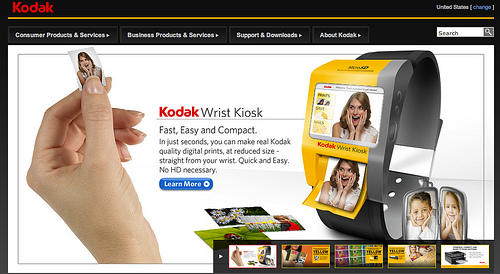You press the button we do the rest
Class two of the Surviving Disruptive Technologies course that I just started was all about Kodak, and how this hugely profitable, incredibly well known company with a 120 year history in photography found itself filing for bankruptcy. The reasons are laid out in many places (this video provides a good introduction), but what I’ve found interesting is the potted history. So much so that I thought I’d just lay bits of it out here.

Kodak was
- Founded in 1880 as the Eastman Dry Plate Company
- in 1888 it had the first snapshot camera - named Kodak - “You press the button we do the rest” but it was expensive at $25 plus processing costs though did take 100 exposures
- in 1900 it launched the Brownie (a cardboard camera) at $1
- in 1962 it hit $1 billion sales
- in 1975 Steve Sasson invented the digital camera
- by 1976 had 90% of market for film and 85% for cameras
- in 1986 Kodak had the first megapixel digital sensor (actually 1.4 Megapixels according to wikipedia)
- in the late 1990s it sold 1 billion rolls of film in the US, by 2011 it sold just 20 million - a 98% drop in core business in 10 years
- over 100,000 people lost their jobs
- in January 2012 filed for bankruptcy
- in February 2012, Kodak announced that it would cease making cameras and will concentrate on printing
- in August 2012, Kodak announced plans to sell its film, commercial scanner and kiosk divisions (via wikipedia)
- in September 2012, Kodak announced that it is exiting the inkjet printer business (via wikipedia) which presumably reduces it’s scope to just commercial printing
- in December 2012 sold patents which they’d valued at $2.5 billion for $525 million to a consortium - this cuts off one of their revenue streams but brings in much needed cash
- in January 2013, a court approved financing for the company to emerge from bankruptcy by mid 2013 (via wikipedia)
- in April 2013 (today) it still managed to push out an April Fool product launch about the wrist kiosk - a wearable photo printer (screenshot below)

It’s going to be interesting to see what’s left after all of these areas are exited, and/or sold on and whether Kodak can continue in any form.